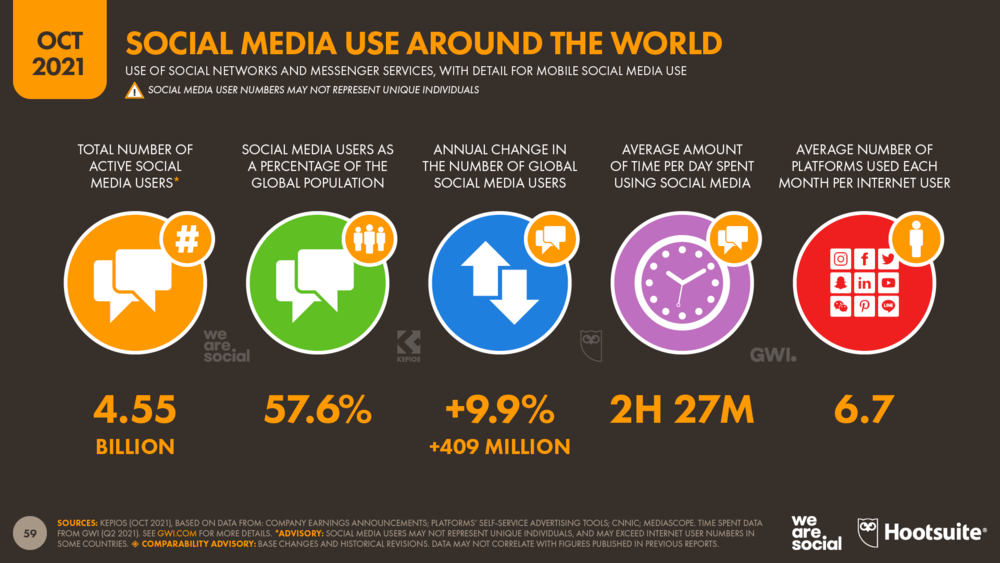
Free to use image sourced from Unsplash
Gathering authentic feedback makes a huge difference to your business growth. It can help your company to deliver a better product or service to its customers.
Since 90 percent of customers are influenced by positive reviews when buying, feedback also makes a huge difference to the reputation of your business. You should have an efficient feedback system to make it easier for purchasers to provide this.
What is customer feedback and why is it important?
We all know what customer feedback is and how it can be gathered through various channels, including email, live chat, chatbots, phone, or social media. But what if you have all these sources open to customers but are still struggling with low engagement?
Without consistent and reliable customer feedback, it can be difficult to identify any pain points within the customer experience. This, in turn, can impact future product and website development, as well as sales, marketing, and customer service strategies.
Customer feedback can help you understand how to improve customer loyalty and reduce customer churn. Showcasing reviews on your website or social media pages can also make a huge difference to your brand reputation. So if you’re currently experiencing low engagement on your customer feedback initiatives, it’s worth doing something about it.
8 tips to get beneficial customer feedback for your business
Now, onto the best ways to gather this customer feedback.
1. Ask your customers for feedback
It’s pretty clear that asking your customers for feedback benefits your business, and most customers are happy to provide you with it. But are you getting the type of feedback you need to improve your customer service?
It’s important to think about the type of information you want to gather. For instance, the most common types of surveys include net promoter score (NPS), customer satisfaction (CSAT), and customer effort score (CES).
You’ll need to refine your questions if you want more specific feedback. Think carefully about the types of questions you ask and keep them short and to the point. It’s a good idea to personalize your communication when asking for feedback, as customers will appreciate that you’ve taken the time to address them directly. Website personalization software can help you do this.
Think carefully about the day if you’re using email to ask for feedback. Statistics show that Monday is the day of the week with the highest email open rate.
2. Send out customer feedback surveys
80% of companies that see consistent growth are using customer feedback surveys to collect data about the customer experience. However, sending useful customer feedback surveys isn’t as simple as international calling or asking the customer if they had a good or bad experience with your brand. You need to think carefully about which touch points or metrics you want to evaluate and plan a survey accordingly.
To create surveys that customers will follow through on, make sure to:
- Make surveys easily accessible. Embed them on your website, send them via email, and don’t rule out text. Research shows that customers are more likely to read a text than an email.
- Not include too many questions. Statistics show that the fewer the questions, the more likely a survey will be completed.
- Offer an incentive. A small discount on their next purchase or the chance to enter a prize draw could have a big impact on engagement rates.
3. Send follow-up emails
Email is the most common method for requesting feedback, and it is obvious why when 99% of people check their emails every day. Once a customer has made a purchase, send an email with a survey following up on their user experience.
It might just be a simple email asking them to give you a rating or a more in-depth survey asking about different aspects of their experience. Make sure your email design is clear and simple. Remember that about 70% of emails are opened on mobile devices, so take that into account and ensure that your emails can be viewed across all devices.
Keep the text simple and to the point. Inform the reader of the purpose of the email and insert a clear call to action. You want to make it as painless as possible to give feedback, so link directly to the survey.
4. Use your social media channels to collect feedback
Social media is one of the most effective channels to communicate with your customers. In 2021, 4.55 billion people were using it. Customers are actively interacting with businesses across different social platforms, and many are expressing their opinion about brands.
Often, customers turn to social media to get in touch with a business when they have a problem. This makes it a great channel for you to build relationships and communities around your brand while also collecting customer feedback.
Be sure to stay active on social media. This means responding to comments and direct messages and engaging with your audience to better understand their feedback about your business.

Image sourced from hootsuite.com
5. Use checkout comments to collect immediate feedback
According to research, 52 percent of consumers say they’ve made an additional purchase from a company after a positive customer service experience.
Therefore, a great time to ask for feedback is when your customers have just made a successful purchase. They’ve had an enjoyable experience with you moments ago and will, hopefully, be open to providing feedback.
You could also offer them a discount on their next purchase to further incentivize them to rate their experience. This not only provides you with customer feedback but also allows you to turn a one-off purchase into a repeat customer.
With your feedback forms, you can gather vital information about customer experience, which can help you understand how to optimize your website or your business phone line apps.
Analyze any direct or implicit feedback you receive from checkout comments or call centers to improve the quality and efficiency of your customer support strategies.
Consider using a voice over internet protocol if your customers prefer to call you rather than leave comments after making a purchase. VoIP phone numbers allow agents to make and receive calls from any device resulting in fewer missed calls.
6. Analyze on-site activity
On-site activity analytics can help you understand how customers interact with your website and identify areas of frustration without having to ask them. If you sell a digital product or service, you can also use these analytics to understand how customers interact with your product so you can improve it.
For instance, if you have a knowledge base on your website to help customers find self-service solutions to their issues, you can look at analytics like time spent on page and bounce rate to see whether they’re achieving the desired results. You can test your software with smoke testing software to ensure that it is running smoothly A bounce rate of over 60% is considered high; you ideally want it to be below 40%. If your bounce rate is on the high side, it’s definitely worth looking into why this is and how you can improve it.
7. Build a community around your brand
58.4% of the population use social media, so, as said above, this is a great place to interact with your customers and to reach out for beneficial feedback. But why not use it to create a community around your brand?
Consider creating a localized-target Facebook group for a new product or a message board on your nz domain where customers can post freely. Directly reach out to them and let them be a part of your product development. In this way, your customers will feel valued and invested in the future of your brand. They will be more open to providing feedback, especially if you show them you actively listen and consider everything they have to say.
Take the time to respond to all comments, negative and positive in a personalized way, and ask follow-up questions to help you improve. Encourage customers to write a review or ask them if you can share their comments publicly.
8. Share your improvements
Once you’ve asked for, collected, and categorized your customer feedback, it’s time to put it to good use. Share the feedback internally among different departments like sales, marketing, and customer support. Perhaps some of it will be more relevant to one department over another.
Implement a cloud PBX system with the best business phone plans to make communicating and sharing files and feedback easy. Opting for a solution hosted in the cloud makes it easy to share information and stay connected even if teams and stakeholders are dispersed worldwide.
It’s a good idea to hold regular brainstorming sessions to focus on how you can use customer feedback to improve your business processes. The business process definition includes employee onboarding to sales and marketing, website design, and development. Customer feedback can be used to inform all of these and more.
But don’t forget to keep interacting with your customers. Show them how you are putting their feedback into practice. Be transparent and provide updates via email, social media, and blog posts showing exactly how you use their feedback to benefit them.
Keep lines of communication open and use these updates to ask for further feedback on any changes implemented. Not only will customers be able to see how much you value their opinions, but they should, hopefully, want to continue being part of the process, providing more feedback in the future.

Free to use image sourced from Unsplash
Drive your business forward with customer feedback
Making customer feedback an integral part of your business strategy allows you to learn from real people who are interacting with your product or service, website, and customer support team.
Asking customers for their feedback and, more importantly, listening to it is one of the best ways to isolate product issues, pinpoint areas that need improvement, and build trusting and profitable relationships in the long term.



